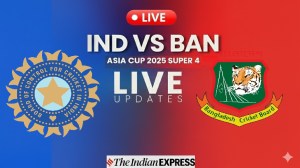Eyes Wide Shut
AROUND 20 per cent of school children in India have defective vision—and we’re not talking about just myopia here. Common eye prob...

AROUND 20 per cent of school children in India have defective vision—and we’re not talking about just myopia here.
Common eye problems that affect children
Though vision shortcomings usually show up in schoolchildren, eye problems can pre-date birth.
Dr Anita Panda, professor at the Rajendra Prasad Eye Centre, AIIMS, lists the common ailments:
Congenital cataract: Usually the result of German measles (a viral infection) contracted by the mother during pregnancy. It can be treated surgically.
Watering eyes: In the first six months, it’s the symptom of dacryocystitis—the obstruction of the passage of tears from the eyes. It can be treated with antibiotic drops.
Conjunctivitis: As in adults, this is the inflammation of the conjunctiva—the thin, transparent membrane that covers the outer eye. The bacterial or viral infection can be treated with antibiotic drops.
Stye: An infection of the eyelash hair follicle (root), it causes pain and swelling of the eyelids, but usually subsides on its own.
Eye trauma: Any injury caused by a sharp object may cause perforation of the eye and loss of vision.
Xerophthalmia: This symptom of Vitamin A deficiency leads to dry eyes, patches on the conjunctiva, corneal ulcers and night blindness. Oral doses of vitamin A should yield results.
|
WRITING ON THE WALL
|
|
|
Have you noticed five or more of these traits in your child? If so, she/he could have a vision problem |
Refractive errors: If a child habitually reads by holding books very close to his/her eyes, or watches TV from very close quarters, it could indicate vision problems such as myopia (short-sightedness), hypermetropia (long-sightedness) or astigmatism (irregular curvature of the cornea).
Squint: Lazy eyes or amblyopia—when the two eyes do not function together because high refractive errors are left uncorrected, or when there’s a big difference in the refractive errors between the two eyes—can lead to a squint. Opthalmic treatment is usually effective in correcting the condition.
Treatment and cures
Most eye problems can be corrected if detected and treated early, says Dr Panda. ‘‘Some problems, if left untreated even for a short period, can result in permanent loss of vision or a squint.’’
Eye check-ups at a hospital nursery can help detect several congenital eye problems. Check-ups should also be carried out between the ages of three and four.
If correction is necessary…
Glasses are the most obvious answer. But some problems such as lazy eyes, squints or crossed eyes may require vision therapy. It involves a series of treatment procedures and eye exercises aimed at teaming, tracking, focusing, visual motor integration and visual perception problems.
Photos



- 01
- 02
- 03
- 04
- 05




























